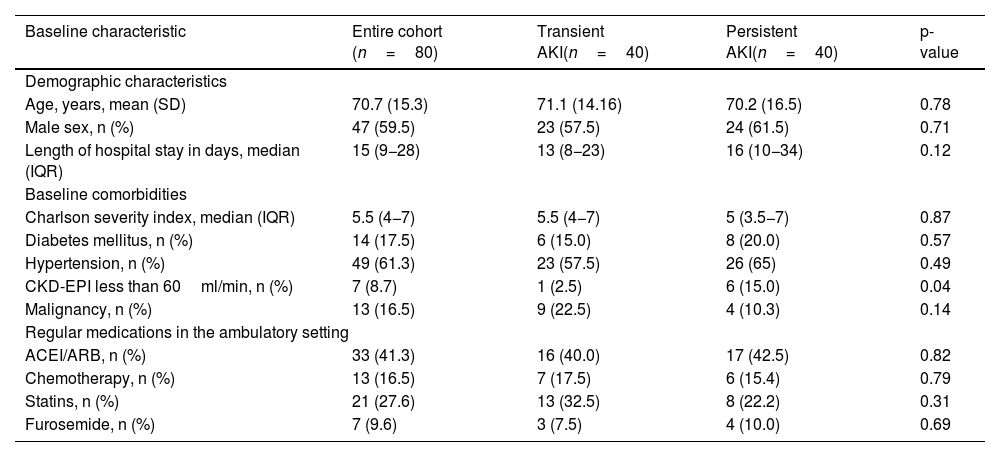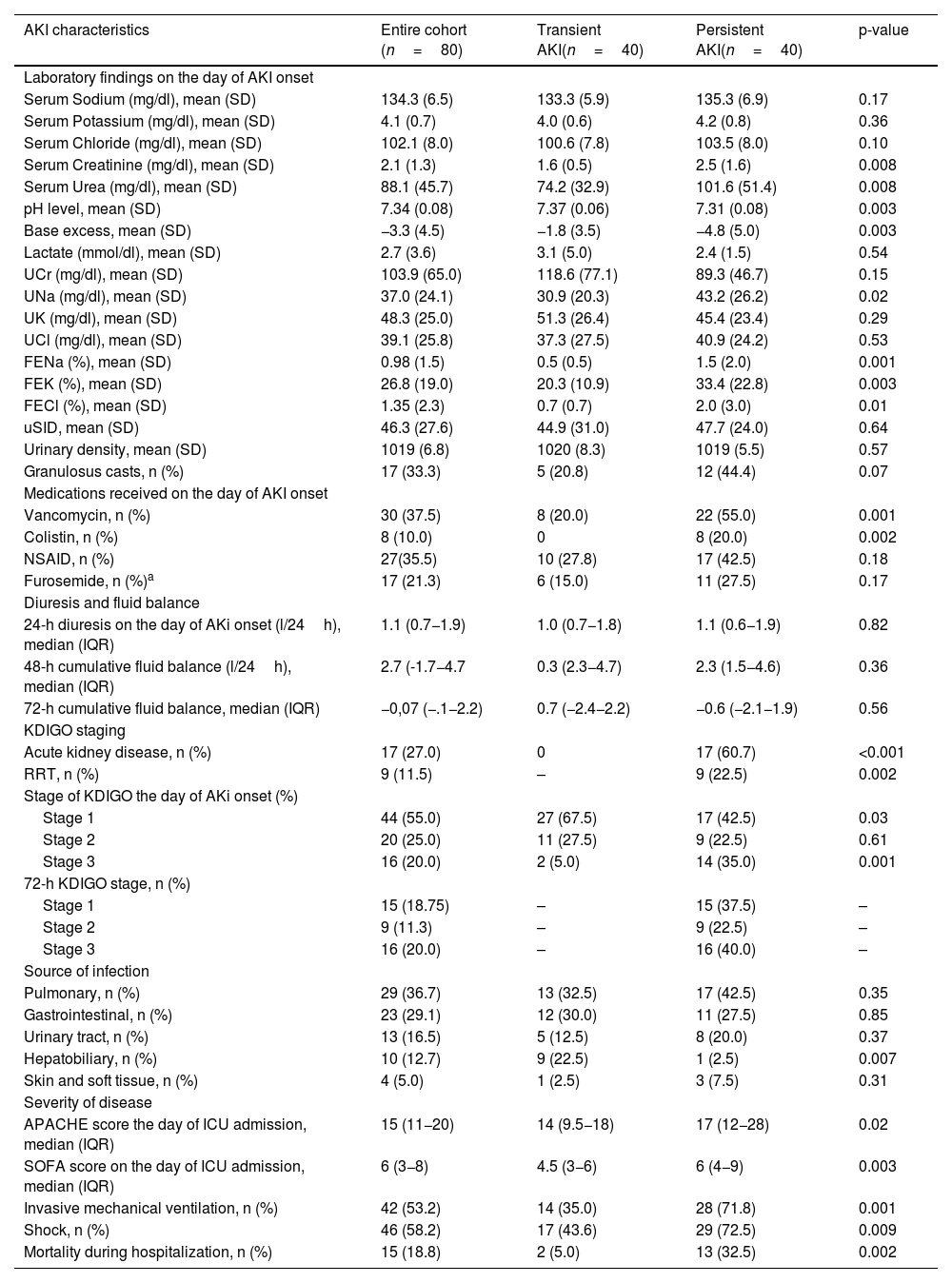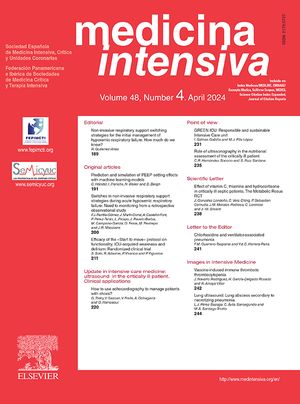To evaluate the diagnostic performance of FENa (Fractional excretion of sodium), FEK (fractional excretion of potassium) and uSID (urinary strong ion difference) in predicting pAKI in sepsis and septic shock.
DesignRetrospective cohort study.
SettingTwo intensive care units in Argentina.
PatientsAdult patients with a confirmed diagnosis of sepsis or septic shock and AKI, and had a urinary biochemistry within 24h of the AKI diagnosis.
InterventionsNone.
Main variables of interestWe evaluated the diagnostic accuracy of FENa, FEK and uSID through a ROC (Receiver Operating Characteristic) curve analysis.
Results80 patients were included. 40 patients presented pAKI. pAKI group had higher APACHE, SOFA score, and mortality rate. In the ROC curve analysis, uSID had no diagnostic utility (AUC=0.52, p=0.69). FENa presented moderate accuracy showing an AUC of 0.71 (95% CI 0.60−0.83; p=0.001), while FEK presented low accuracy with an AUC of 0.69 (95% CI 0.57−0.80; p=0.04). The optimal Youden point for identifying pAKI was at a FENa higher than 0.51 % with a specificity of 72.5% and a sensitivity of 65.0%. In the case of FEK, a value higher than 21.9 % presented the best relation, with a specificity of 67.5% and a sensitivity of 65.0%.
Conclusionsurine biochemistry interpretation in septic patients must be revised. FENa and FEK are related to the severity of AKI and could be helpful complementary tools for diagnosing pAKI.
Evaluar la utilidad diagnóstica de la Excreción fraccional de Sodio (FENa), Excreción fraccional de potasio (FEK) y uSID (diferencia de aniones fuertes urinaria) en el diagnóstico de la IRA persistente (IRAp).
Ámbito2 unidades de cuidados intensivos en Argentina.
PacientesAdultos con diagnóstico de sepsis o shock séptico e injuria renal aguda (IRA) y disponibilidad de una bioquímica urinaria dentro de las 24hs del diagnóstico de la IRA.
IntervenciónNinguna.
Variables de interés principalesEvaluamos la capacidad diagnóstica de la FENa y FEK y la brecha aniónica urinaria mediante un análisis de la curva ROC (Receiver Operating Characteristic).
ResultadosSe incluyeron 40 pacientes en cada grupo (IRAp vs transitoria). Los pacientes con IRAp tuvieron mayor APACHE, SOFA y mortalidad. En el análisis de las curvas ROC, la uSID no demostró utilidad diagnóstica (AUC=0.52). La FENa presentó moderada precisión con un AUC de 0.71 (IC95% 0.60–0.83), mientras que la FEK tuvo un AUC de 0.69 (IC95% 0.57−0.80). El punto de Youden para diferenciar IRAp para la FENa fue de 0.51% con una sensibilidad de 65.0% y una especificidad de 72.5%. En el caso de la FEK, el punto óptimo fue de 21.9% con una sensibilidad de 65.0% y una especificidad de 67.5%.
ConclusionesLa interpretación de la bioquímica urinaria en pacientes sépticos debe ser revisada. La FENa y FEK están relacionados con la severidad de la IRA y pueden ser herramientas diagnósticas complementarias de utilidad.
Article
Go to the members area of the website of the SEMICYUC (www.semicyuc.org )and click the link to the magazine.









